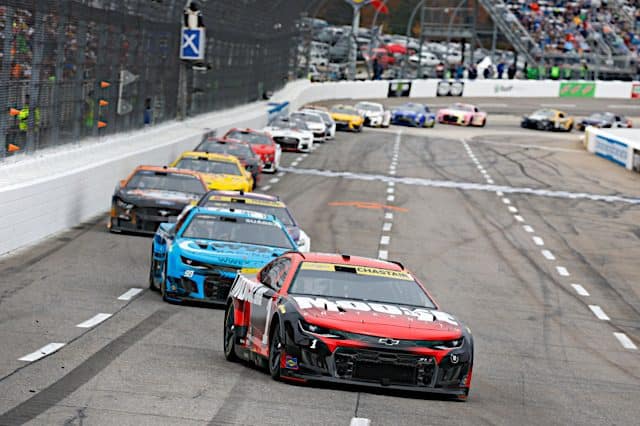From the mid-1990s to the early 2000s, NASCAR exploded in popularity.
Aided in part by the CART-IRL split of 1996 and a split broadcasting deal with FOX and NBC in 2001, NASCAR went from a predominantly niche, regional sport to one with national recognition.
But somewhere along the way, all of its fortunes went in the wrong direction. The ratings peaked 18 years ago in 2005, and they’ve been on a long, downward slide since.
There’s not one event to pinpoint when NASCAR began its skid. Perhaps the introduction of the playoff format in 2004 was jumping the shark. Maybe it was the removal of historic tracks like North Wilkesboro Speedway and Rockingham Speedway, even if they had outdated infrastructure and were on the brink financially. What about the criticized Car of Tomorrow implemented in 2007, or the Great Recession in 2008?
What if NASCAR’s sudden boom in popularity was simply a fad and wasn’t sustainable long term?
Whatever the reason may be, it has shown in race attendance, TV ratings and media coverage. And in the south — the heart of NASCAR for its entire history — a lot of the interest seems to have fallen by the wayside as well.
Faced with a shrinking fanbase, NASCAR needs to find ways to reinvent itself without dramatically altering races any further than what has been done already. And to its credit, the sanctioning body has tried new ideas. The 2021 and 2022 seasons saw a huge schedule shakeup with a stadium exhibition race, a dirt race, two new ovals, a handful of new road courses and a brand new car.
Some things may not work out, but that is still better than keeping the status quo. But once it becomes clear that something doesn’t work, it needs to be cut. The relative lack of change (aside from stages in 2017 and the elimination format in 2014) from 2005 to 2020 didn’t help.
But while NASCAR needs to focus on keeping its current fanbase entertained, it also needs to look outward without alienating fans that are already watching.
The sanctioning body has struggled in attracting the age 18-49 demographic, which is concerning when looking at things long-term; that demographic is the future. But as previously mentioned, NASCAR can’t chase a new demographic if it risks running off its current audience. What’s the middle ground?
Perhaps it lies in the way the sport is advertised. While Formula 1 has yet to overtake NASCAR in total audience in the United States, it is starting to equal,…
Click Here to Read the Full Original Article at …

